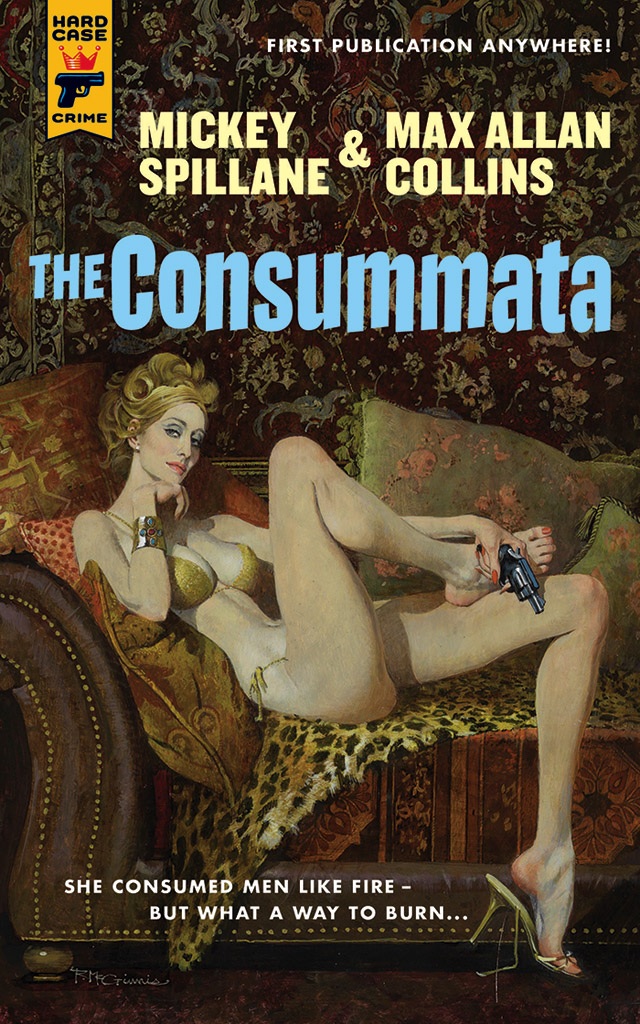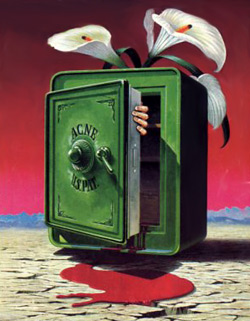Thanks to Hallmark and Lifetime, among others, there’s no shortage of Christmas movies available right now, particularly on the streaming services. I ran across one such flick this weekend and just took a casual look at it, initially, before getting caught up and taking the whole sleigh ride. From my perspective (and I’ll be discussing that), this made-for-TV-movie is a particularly memorable example of its kind. But in the unlikely event that you see anyone else discussing it online (or anywhere), you will almost certainly find it dismissed and even disparaged.

It Happened One Christmas (1977) is a gender reversal of It’s a Wonderful Life with Marlo Thomas in the James Stewart role – not just a twist on the premise, but a remake and one that invokes the look of the original film (the story remains in period) and uses much of its dialogue. To understand how the telefilm even exists requires a little background.
It’s a Wonderful Life (1946) was largely forgotten until it accidentally lapsed into the public domain. In the 1980s the film began its rise to Christmas season perennial, initially through screenings on PBS stations. This Yuletide film noir is essentially an American take on A Christmas Carol, with Lionel Barrymore (who had played Scrooge famously on radio from 1934 to 1953, although in 1938 Orson Welles filled in) as Scrooge-like Mr. Potter. In a way, it’s A Christmas Carol from the point of view of Bob Cratchit.
Though Jimmy Stewart has been perhaps my favorite screen actor since Vertigo warped me at age ten (and despite my being a film buff as long as I can remember), in 1977 I had not only never seen It’s a Wonderful Life, I wasn’t even aware of its existence. I watched It Happened One Christmas in December 1977 without knowing it was a remake of a Frank Capra movie (even though the remake’s title winked at the source by invoking Capra’s career-making It Happened One Night).
The reason I watched it in the first place was Wayne Rogers. My love for his short-lived mid-‘70s private eye show, City of Angels, had made me a fan of his, and here he was in another period piece. He even looks much like his fedora-sporting P.I. Jake Axminster in It Happened One Christmas. That got me up the gangplank, but my love for a certain kind of fantasy – Here Comes Mr. Jordan and, yes, the Alistair Sim Scrooge – kept me onboard.
In 1977 I had just signed to write Dick Tracy. We got a nice advance from the Tribune Syndicate (I had to begin work on the strip three or four months before my paychecks kicked in) and our extravagance was to buy one of them new-fangled video tape recorders – a Betamax. The very first movie I recorded – the very first anything I recorded – was It Happened One Christmas, off the air (an ABC Sunday Night Movie), using two 60-minute tapes.
That was the beginning of a still-in-progress collecting obsession that would turn into thousands – yes, thousands – of videotapes, laser discs, DVDs and Blu-rays as my wonderful if demented life unspooled.
So when, this past weekend, I discovered It Happened One Christmas streaming on Amazon Prime, I just started watching for what I thought would be for a brief visit with an old friend. Even as the credits began, I realized the telefilm looked great – it was in 16:9 widescreen format and HD! And as I read the opening credits, I noticed something early on – the cinematographer was Conrad Hall.
Conrad Hall, as you may know, was one of the greatest directors of photography in the history of Hollywood. He won an Oscar for a little something called (wait for it) Road to Perdition. Had George Bailey not existed, his brother would have died breaking through the ice, remember, consigning all those soldiers on a troop carrier to die. But if I hadn’t existed, Conrad Hall wouldn’t have won his Academy Award shortly before his death.
So just seeing Hall’s name in the credits sat me up in my recliner. Other names – and some actors who didn’t make the opening credits, but who were instantly recognizable to me – had even greater resonance today than when I first saw (and loved) the telefilm. Getting top billing with Marlo Thomas and Wayne Rogers was Orson Welles, once again filling in for Lionel Barrymore as Scrooge-like Mr. Potter. Cloris Leachman, the Iowa girl whose first movie was Kiss Me Deadly, is Clara, the role reversal of Clarence the angel. Christopher Guest in a rare straight role was Harry Bailey, Mary Bailey’s brother. Archie Hahn from Phantom of the Paradise (“Little Eddie Mitty, born in Jersey City…”) was Ernie the cab driver.
Now that I’ve seen It’s a Wonderful Life countless times, I am aware of just how faithful a remake It Happened One Christmas really is – it even includes the Charleston contest with the hidden swimming pool beneath the gym floor. Hall’s attention to the look of the original film – the art direction by top talent John J. Lloyd was Emmy-nominated – is respectful to say the least.
But even more interesting is the gender-reversal aspect that takes the telefilm into new areas – when Mr. Potter offers Mary Bailey a box of cigars for her husband as a sweetener for the bribe he’s tempting her with, she hands it back to him, saying, “Have a cigar, Mr. Potter – I’m gonna have a baby!” That the Thomas character wants to leave the idyllic but boring small town to live her own life and follow her own talents has strong (but not overplayed) feminist underpinnings.
Leachman was Emmy-nominated, too, and Rogers and Welles are quite wonderful. But Thomas is the surprise. She is luminous, and her acting is spot on, the emotions she conveys – that she’s a mother amplifies things – genuine and often heart-breaking. Stewart gave his first dark post-combat performance in Wonderful Life, just as Thomas in Happened One Christmas explores the frustrations of a young woman in the mid-20th Century trying to live her own life and pursue her goals and dreams. It seems a pity that her acting career, post-That Girl, didn’t really go anywhere, but that may have been her choice. I really don’t know.
What I do know is that it’s a pity this film became lost in the shuffle when public-domain screenings in the 1980s gave It’s a Wonderful Life a wonderful second life. There’s no question that Capra’s film is a big-screen classic. Yet this small-screen tribute, a canny re-imagining, is itself an unrecognized classic of the late 20th Century TV movie.
Merry Christmas, movie house.
Rest in peace, Betamax.
Here are the five great Christmas movies, as I wrote about them in 2014:
1. Scrooge (1951). Alistair Sim is the definitive Scrooge in the definitive filming of A Christmas Carol.
2. Miracle on 34th Street (1947). Hollywood filmmaking at its best, with Edmund Gwen the definitive, real Santa Claus, Natalie Wood in her greatest child performance, John Payne reminding us he should have been a major star, and Maureen O’Hara as a smart, strong career woman/working mother who could not be more glamorous.
3. It’s a Wonderful Life (1946). Heartwarming but harrowing, this film is home to one of James Stewart’s bravest performances and happens to be Frank Capra’s best film.
4. A Christmas Story (1983), Jean Shepherd’s unlikely claim to fame, and a Christmas movie with Mike Hammer and Carl Kolchak in it.
5. Christmas Vacation (1989) uncovers every Christmas horror possible when families get together and Daddy tries too hard.
Here’s a positive review of Do No Harm from Kirkus, although their assertion that the book is more fiction than fact belies the rigorous research that went into it.
I hope all of you have wonderful Christmases. I am a sucker for this time of year, and for the first time we have our entire family living here in Muscatine, Iowa…with son Nate, daughter-in-law Abby, grandson Sam (four) and granddaughter Lucy (one) just up the street. They’ll be spending Christmas Eve and morning with us.
By the way, this is an official Christmas, so-defined by our receiving our annual Christmas card from Paul Reubens and his friend Pee-Wee Herman.
M.A.C.


 There’s
There’s